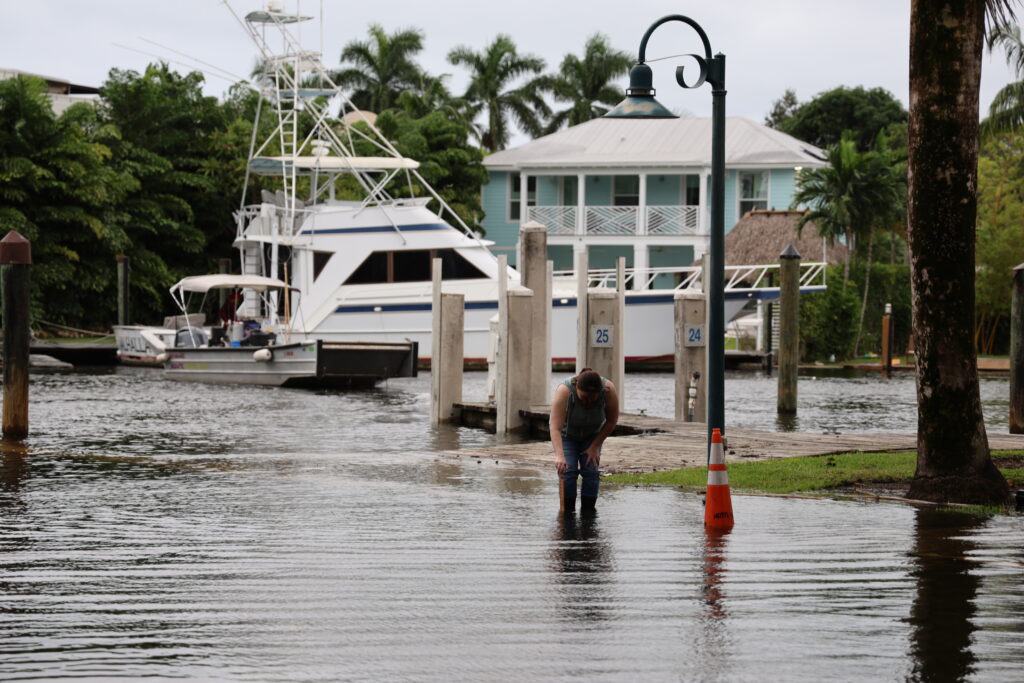By Rebecca Clark, FAU Center for Environmental Studies
1. King tides are exceptionally high tides that occur when the gravitational forces of the sun, moon and Earth align.
2. These tides occur when the moon is at its perigee (closest to Earth) and the Earth is at its perihelion (closest to the sun).

3. In Florida, king tides typically happen in the spring and fall – the highest of which occur in fall months. They typically happen 3-4 times per year, usually during the new or full moon phases.
4. King tides can cause tidal flooding, even on sunny days, affecting commutes and damaging property in low-lying coastal communities across the entire coast of Florida.
5. Other factors like storms or strong winds can influence water levels, either reducing or intensifying them, during king tide events.
6. In Florida, king tides are a growing concern due to the state’s low-lying topography and vulnerability to sea level rise.
7. During king tides, some tide stations along Florida’s east coast of have recorded water levels over 2 feet higher than normal. In October 2023, Miami Beach experienced a rise about 2.75 feet higher than normal.
8. It’s important to avoid driving through tidal floods. Saltwater can be corrosive to the undercarriage, brakes, body panels and electrical systems of your car, causing extensive damage.
9. The Southeast Florida Regional Climate Compact projects sea level rise of 10 to 17 inches by 2040 in their most likely scenario, which would exacerbate king tide flooding.
10. With just 1.5 feet of sea-level rise, approximately 573 more tidal flooding events could occur annually in South Florida.
The Florida Atlantic University Center for Environmental Studies (CES) manages The Invading Sea. Sign up for The Invading Sea newsletter by visiting here. Banner photo: Another image of CES staff measuring water levels during king tide flooding. To learn more about king tides, watch the video below.



